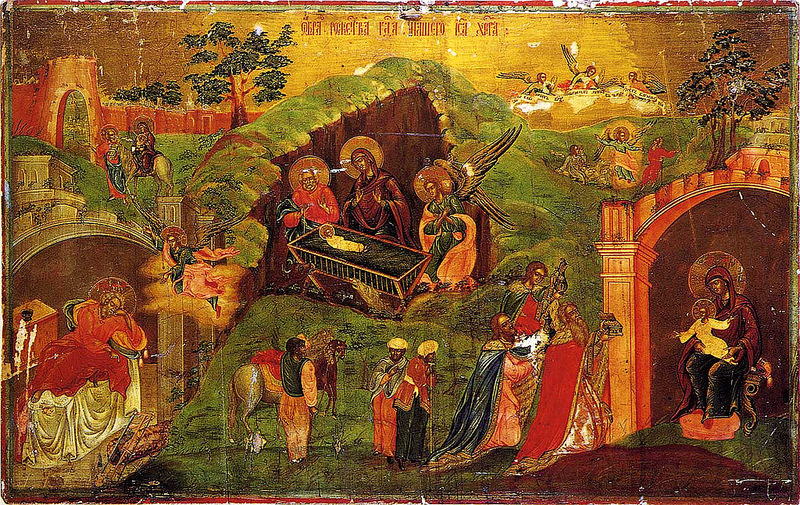Article
The Missionary Strategy of the Early Church
There has never been a more rapidly growing movement than the post-apostolic church.

The expansion of the post-apostolic Church was unparalleled. As a proportion to the population, there has never been a more rapidly growing movement. Within ten years after the death of Christ, there were churches in Alexandria and Antioch. [4] By the end of the second century, churches were active throughout the Roman Empire and as far away as Mesopotamia.
The rapid spread of the church can be attributed to many factors other than ecstatic gifts and wandering prophets. However, there were certain pre-existent factors during this time that helped make growth possible. Though they were not the cause of growth, they are important elements. These factors include the existing synagogue system, the Hellenized culture, the Roman infrastructure, and the mystery religions.
The Existing Synagogue System and State of Judaism
By the time of Christ, Judaism was the most vital religion in the Greco-Roman world. [3] Some estimates range that as high as 12 percent of the Roman population was Jewish with over one million Jews in Egypt. There were perhaps 4-4.5 million Jews spread throughout the Roman Empire. [4] The synagogue was the center of life for the Jew outside of Palestine. [5] These vibrant Diaspora communities would become magnets to draw missionary believers out of Jerusalem. [3] Contrary to some perceptions, the Jews of this time were strong in the area of outreach, thus, they prepared the Roman world for proselytization. [4] By concentrating efforts within the established synagogue, but specifically reaching those who were not fully initiated into Judaism, early Christians had great success. [4]
Hellenization
The adoption of Greek culture was widespread throughout the Roman Empire (particularly in the East). Hellenization allowed for a common language and culture and the Greek language was spoken throughout the Empire. Through Hellenization, the known world shared, at least in a surface way, a common worldview.
Perhaps even more important were the nuances the Greek language provided. For centuries, the Greek language had been used to express the thoughts of the greatest thinkers. As evidence, the lack of this specialist vocabulary would lead to difficulty when Latin replaced Greek as the common tongue. [4] The Gospel was able to thrive in a linguistic milieu where its subtleties could be expressed.
The Roman Empire
The Roman Empire was, in large measure, eventually “taken over” by Christianity. Eventually its diocese system would become the boundaries for churches and bishops. Its capital would become headquarters for the world church. The Roman Empire would become the Roman Church. The reasons for this are many, but the empire made evangelization and expansion possible by its roads and tranquility.
The roads of the Roman Empire were unparalleled. This network allowed, for the first time, travel throughout the known world. The Roman Empire (and its transportation system) stretched from Atlantic to Arabia; North England to the Nile. [1] Roads, some still in use today, stretched throughout this vast expanse. They were also mostly free of piracy [2] allowing for unmolested travel throughout the Empire. In many ways, travel was easier in that era than it is today (no passports, etc.). [1] Traveling along the roads made most sense when considering missionary endeavors: a paved road to the next unreached town, or a trip into the wilderness. Clearly, the early church chose the former.
Furthermore, the impact of the Pax Romana is difficult to understate. Though there were occasional revolts, this peace lasted from 27 B.C. until 96 A.D. Even Eusebius takes note of the opportunity this peace afforded the early church. [2] Had Jesus been born 50 years earlier, much of the spread of the Gospel would have been impossible.
The Rise of Mystery Religion
The rise of religion and the decline of exact science, [5] though seemingly contradictory to the rise of Hellenistic rationalism, provided an additional resource for the early church. Already, the state religions were discredited and dissatisfying. Mystery cults provided promises of life after death, ecstatic union with deity(ies), and freedom from guilt. [4] Mystery religions had much in common with Christianity including, in some cases, baptism, a ritualized meal, life after death, etc. [1] There existed one major difference: what the mystery religions promised, Christianity provided. The unbeliever could see the power in healing and exorcisms that the early church practiced. These religions were indicative of the state of the Empire. Men and women were receptive to a faith embracing the emotive and ecstatic. The mystery religions offered such a faith. Christianity did as well, and impacted the Empire already accustomed to the expression of the supernatural.
Conclusion
These factors provided unsurpassed opportunity for the gospel to spread. “Gifts” from the Jews, Romans, Greeks, and pagans would help the Gospel to grow from a small sect in Palestine to the state religion in 300 years. The unique combination of these factors prepared the Empire for a new faith.
Endnotes
[1] Bull, Norman J. The Rise of the Church. London: Heinemann Educational Books, Ltd., 1967.
[2] Davies, J.G. The Early Christian Church, History of Religion Series. New York: Holt, Rinehart and Winston, 1965.
[3] Frend, W.H.C. The Early Church. Philadelphia: P.B. Lippincott Company, 1966.
[4] Green, Michael. Evangelism in the Early Church. Grand Rapids: William B. Eerdmans Publishing Company, 1970.
[5] Harnack, Adolph. The Expansion of Christianity in the First Three Centuries, Vol. 1. Edited and Translated by James Moffatt. New York: Books for Libraries Press, 1972.



